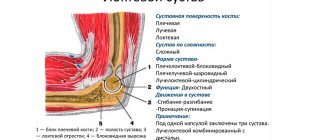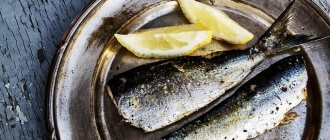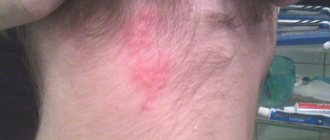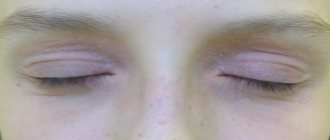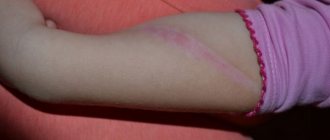What is atopic dermatitis
Atopic dermatitis is a chronic skin disease characterized by a relapsing course.
Babies with atopic dermatitis are bothered by itching and dry skin. Foci of inflammation can be located throughout the body, but they especially “love” children’s cheeks and folds, as well as the area under the diaper. Statistics indicate that atopic dermatitis occurs in every fifth baby [1]. Why is he dangerous? Lack of treatment can lead to the development of severe forms of atopic dermatitis, the spread of inflammation and the atopic march. In this condition, the disease begins to “march” through the child’s body, provoking the appearance or exacerbation of concomitant diseases. In 20-43% of cases, the development of bronchial asthma is possible, and twice as often - allergic rhinitis or eczema [2].
In addition, disruption of the hydrolipid barrier that occurs with atopic dermatitis in children can cause a secondary infection. Unfortunately, atopic dermatitis cannot be “outgrown.”
Treatment of eczema on the elbows at the Paramita Clinic
Our clinic specializes in patients suffering from chronic skin diseases. Doctors were trained in the world's best medical centers. They own:
- all types of drug therapy;
- modern Western therapeutic techniques;
- traditional oriental methods - all of them were trained in these methods in China and Tibet.
The distinctive features of the clinic are an individual approach to the treatment of each patient, comfortable conditions and friendly attitude of the staff. The clinic’s specialists relieve patients from eczema on the elbows for a long time. And with regular maintenance treatment, patients forget about their illness forever.
To completely eliminate the causes and symptoms of eczema, we use not only creams, ointments and tablets, but also modern European and traditional Eastern methods:
- PRP therapy is a method that allows you to activate the body's defenses. Based on the ability of platelets to restore damaged tissue. The patient is injected with his own blood plasma enriched with platelets.
- Autohemotherapy – stimulation of the immune system by intramuscular injection of blood taken from the patient’s vein;
- Reflexology: acupuncture – needles are inserted into special acupuncture points (AP) on the patient’s body;
- moxotherapy - warming up the AT with wormwood cigarettes;
- acupressure.
Sign up for a free initial appointment
Symptoms of atopic dermatitis in children
According to recent studies [3], in 45% of babies, atopic dermatitis debuts between the ages of two and six months. In 60% of patients during the first year of life.
With atopic dermatitis in children, clinical symptoms and localization of inflammation largely depend on age. There are infant (up to one and a half years), child (from one and a half years to puberty) and adult phases. The following symptoms are common to all phases:
- Severe dryness of the skin (xerosis), which cannot be treated with regular baby cream .
- Redness and inflammation on the skin (especially symmetrical ones).
- Itching, causing severe discomfort to the child.
- Recurrent course (alternating periods of remissions and exacerbations). Moreover, in the cold season, deterioration is more often observed, and in the warm season, improvement is observed.
According to the nature of the course, acute and chronic stages of atopic dermatitis are distinguished, which are expressed by different signs (symptoms):
● Acute stage. Rough red spots (erythema), nodular rashes (papules), swelling, and crusts (including weeping) may appear on the baby's skin.
● Chronic stage. Accompanied by lichenification (thickening of the skin), cracks on the soles and palms, scratching, and increased pigmentation of the skin of the eyelids.
Stages of eczema on the elbows
The disease can occur in the following stages:
- Acute
. It in turn is divided into:- erythematous – redness and swelling of the affected area of the skin;
- papular - the appearance of papular rashes;
- vesicular – the appearance of vesicles on the surface of papules;
- weeping - the formation of erosions and the release of serous fluid;
- cortical – drying of the vesicles and covering them with crusts.
- Subacute
- the skin thickens, the pattern intensifies, and peeling appears. - Chronic
- the skin becomes bluish, lichenized, peels, and pigment spots appear. Periodically developing relapses are characterized by the appearance of a small number of bubbles.
Causes of atopic dermatitis in children
Atopic dermatitis can be considered a hereditary disease, because the most important role in its occurrence is played by a genetic factor [3]:
- In 80% of children, it occurs if both parents have or have had atopic dermatitis.
- In more than 50% of children - if at least one of the parents was sick, especially the mother (this doubles the risk of transmitting the disease “by inheritance”).
Some prenatal factors can also provoke atopic dermatitis in a baby: for example, poor nutrition of the expectant mother, contact with toxic substances, infections suffered during pregnancy, as well as bad habits and stress.
In addition, atopic dermatitis more often develops in babies who suffered oxygen deprivation during childbirth, were born prematurely and were bottle-fed (perinatal factors).
Diagnosis of atopic dermatitis in children
For a long time it was believed that atopic dermatitis in children is predominantly an allergic disease. However, it has now been proven that this is, first of all, a disease with dysfunction of the epidermis! And food allergies are detected only in 30-40% of children with atopic dermatitis.
The symptoms of atopic dermatitis are almost always influenced by certain environmental triggers. This could be chlorinated or “hard” water, soap, contact with an allergen, unfavorable climate and even stress. Another common trigger is bacteria that enter the skin through a damaged epidermal barrier.
Only a doctor (pediatrician, dermatologist, allergist) can make a diagnosis of “atopic dermatitis in children”! It takes into account the presence of external signs of disease and itching, as well as hereditary factors. Laboratory tests may be prescribed for children to carry out diagnostics. For example:
- General detailed (clinical) blood test.
- Biochemical general therapeutic blood test.
- General (clinical) urine analysis.
- Study of the level of total immunoglobulin E in the blood.
- Skin testing with allergens.
- Skin biopsy.
When you can't do without medical help
Rough elbows are a problem that is not immediately noticed. Many signs of disease are manifested by dryness and roughening of the skin on or around the elbows. The tissues do not heal, dry and thin skin itches, microcracks and inflammation appear.
If you have such symptoms, you should sound the alarm and consult a specialist. The doctor will order an examination and take appropriate treatment measures.
Treatment of atopic dermatitis in children
In modern medicine, there are three degrees of severity of atopic dermatitis in children:
- Easy. The child responds well to treatment, remission can last more than 10 months, the itching is minor, the redness is slight. Exacerbations occur no more than twice a year.
- Medium-heavy. Exacerbations occur 3-4 times a year, and periods of remission are reduced to 2-3 months. The therapy gives less pronounced results, the redness “stubbornly” returns.
- Heavy. Long-term exacerbations are interrupted by short periods of remission - up to one and a half months. Treatment helps little or for a short period of time; the baby’s behavior is greatly affected by itching [4].
At all stages of atopic dermatitis, pediatricians and dermatologists recommend emollients - cosmetic skin care products. They moisturize the skin and help restore the level of lipids - the most important structural components. During periods of exacerbation, emollients can be applied frequently and generously.
Pay attention to the composition; it is advisable that emollients are not addictive. Their main tasks are to help the skin produce its own lipids, providing effective hydration and softening. In addition, the constant use of emollients prolongs periods of remission and alleviates the symptoms of atopic dermatitis.
The Mustela Stelatopia line of cosmetics will help restore skin comfort for a long time! Stelatopia emollients are effective at all stages of atopic dermatitis , incl. at its first signs - increased dryness of the skin.
Studies have confirmed that the use of Stelatopia emollient cream can reduce the likelihood of developing atopic dermatitis by 51% ! [6]
Treatment (use of hormonal drugs) for atopic dermatitis in children can only be prescribed by a doctor, taking into account age, symptoms, concomitant diseases and test results. Self-medication can be dangerous!
- For external therapy for moderate and severe degrees of atopic dermatitis, topical glucocorticosteroids, topical calcineurin inhibitors and others are used.
- In case of mild disease, the use of Stelatopia Emollient Cream reduces the severity of inflammation after 32 hours, due to the presence of sunflower oil in the distillate [5].
- In systemic therapy, the drugs dupilumab, cyclosporine, glucocorticosteroids and others are used orally or in injection forms.
- To relieve itching - clemastine, hifenadine, cetirizine, chloropyramine, levocetirizine and others. The use of Stelatopia emollient cream as a cosmetic skin care product reduces the severity of itching in 80% of cases [7].
- Physiotherapy treatment may include phototherapy. Sometimes, in the treatment of atopic dermatitis, diet therapy, acupuncture, plasmapheresis and some other methods may be prescribed.
Using folk remedies at home
You can treat eczema at home only after consulting a doctor. There are many traditional methods for treating this disease. In case of severe weeping, you can make applications with a cold decoction of oak bark.
- take 4 tablespoons of bark, add hot water, cook for 15 minutes over low heat, cool, strain, add boiled water to the original level;
- place the decoction in the refrigerator and make daily applications, applying a napkin moistened with the decoction to the affected areas of the skin.
For dry eczema, you can apply a cut aloe leaf (with the inside) to your elbows - this softens the skin well and relieves itching.
Prevention of atopic dermatitis in children
For atopic dermatitis, primary, secondary and tertiary preventive measures are distinguished.
Primary prevention
is aimed at preventing the occurrence of atopic dermatitis in children.
Recommended:
- Expectant mothers with a tendency to allergic reactions should exclude allergenic foods from their diet.
- Introducing complementary foods to babies begins at four months of age.
- Pregnant women and newborns at risk should take probiotics containing lactobacilli.
- Practice breastfeeding whenever possible.
- Eliminate exposure of your baby to tobacco smoke.
- Maintain humidity levels and regularly ventilate the children's room.
Secondary prevention
is aimed at eliminating risk factors that, under certain conditions (stress, weakened immunity, etc.) can lead to the occurrence, exacerbation and relapse of atopic dermatitis.
Recommended:
- Regular consultations with specialists.
- Maintaining awareness of new research and drugs in the treatment of atopic dermatitis.
3.Tertiary prevention
is a set of measures aimed at preventing exacerbations or development of complications of atopic dermatitis.
Recommended:
- Avoid contact of the baby with provoking factors: soap (it dries the skin), clothes made of rough or synthetic fabrics, low-quality cosmetics, etc.
- Take care of your child's skin and apply emollients on a regular basis, including during periods of remission.
- Bath your baby daily using cosmetic cleansers for atopic skin.
[1] Isaac Steering Committee. (1998). Worldwide variation in prevalence of symptoms of asthma. The Lancet, 351, 1225-1235. (International Committee on Asthma and Allergy in Childhood 1998. Worldwide differences in the prevalence of asthma symptoms. The Lancet, 351, 1225-1235). [2] Studies Watson W., 2011, Larsen F.S., 2002, Draaisma E., 2015, ISAAC Steering Committee, 1998. (Studies Watson W., 2011, Larsen F.S., 2002, Draaisma E., 2015 International Committee on the study of asthma and allergies in childhood, 1998). [3] Clinical guidelines. Atopic dermatitis, 2022. [4] Atopic dermatitis: recommendations for practitioners. Russian national consensus document on atopic dermatitis. Ed. P.M. Khaitova, A.A. Kubanova. M.: Pharmacus Print, 2002. 192 p. [5] ODT and inflammation June 2010 [6] Scientific dossier “Atopic-prone skin: latest discoveries” [7] Test report “Stelatopia” emollient cream, self-assessment by users
